If you’re stuck choosing between the EcoFlow Delta 2 Max vs. Anker Solix F2000, you’ve come to the right place. These power stations aren’t about flashy promises. They offer practical solutions for keeping your devices charged, whether you’re off-grid, on a road trip, or preparing for an outage.
In this power station comparison, we’ll break down the specs and highlight the differences that matter most, so you can choose the best fit for your lifestyle. We’ll leave out the hype and give you clear, honest information to help you make an informed decision that suits your power needs.
Let’s see if the EcoFlow Delta 2 Max is better than the Anker F2000 or not.
We carefully select the products and services we link to. If you buy through our links, we may earn a commission. There’s no extra cost to you and it helps us provide this information.
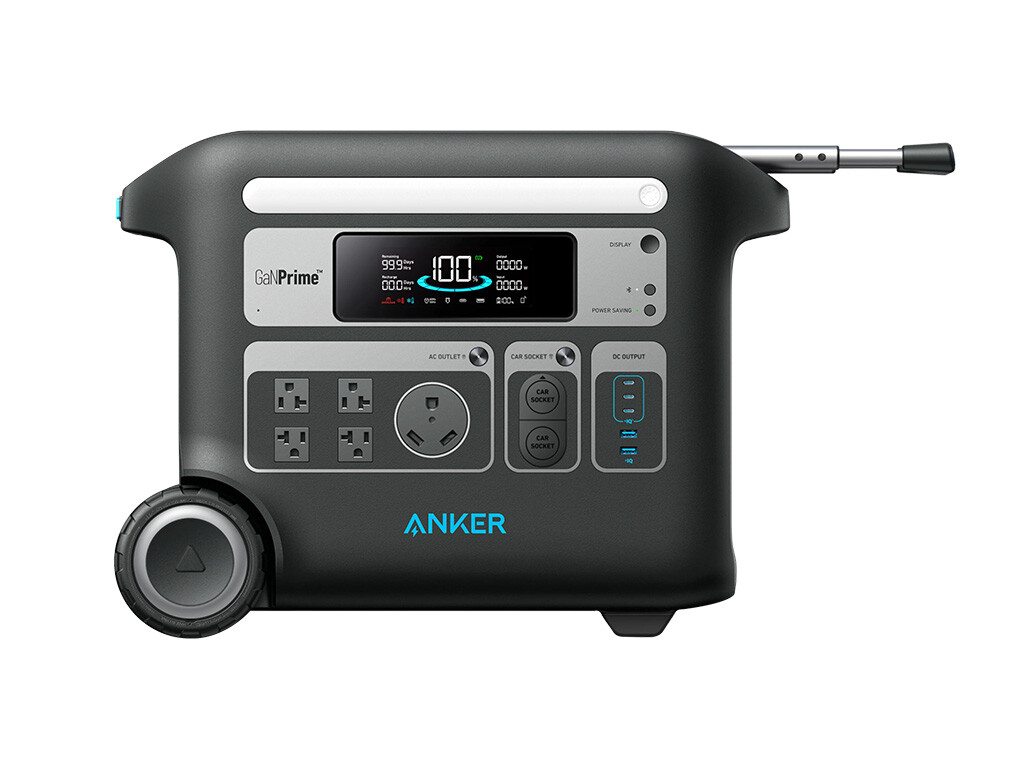
Quick Breakdown: Battery Reigns Supreme
When it comes to the EcoFlow Delta 2 Max vs. Anker Solix F2000, you’re comparing two solid options in the midrange power station category. Both have their strengths and neither is over-the-top flashy, but they get the job done.
This is a very close matchup. While there are some vital differences to know about, the core specs are nearly identical with the same internal battery size and inverter rating. That doesn’t tell the whole story though.
The EcoFlow Delta 2 Max is our top pick for most people thanks to its:
- Larger battery expansion
- Dual solar input flexibility
- Lighter weight, more compact design
The Delta 2 Max packs more power into a lighter package, making it easier to transport without sacrificing performance. For anyone needing extra capacity or off-grid solar options, this model is hard to beat.
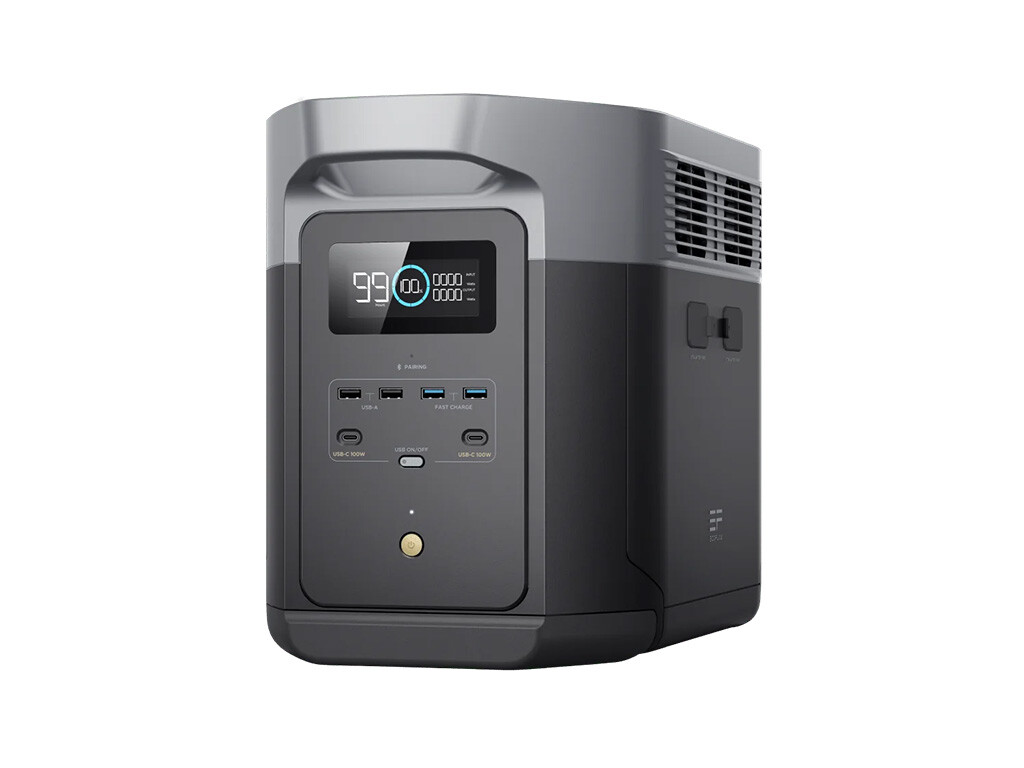
The Anker Solix F2000 still has some stand-out features. For certain cases, it’s a better option than the EcoFlow alternative because it has:
- High-amp outlet (30A)
- Faster UPS transfer time
- Extra USB-C ports for charging
Where the F2000 shines is with its ability to handle heavy-duty equipment and high-amp needs. It’s slightly heavier, but for those looking for fast UPS switching or more USB options, it’s a solid choice.
In terms of value, both stations are priced competitively for what they offer with price per battery watt-hour always less than $1.00 per Wh. The Anker MSRP is slightly higher, but you can often find discounts or sales that take the actual price lower. Since these are so evenly matched, the value comparison will simply come down to what’s more affordable at the time of your purchase.
Since either unit can have a total battery capacity above 3kWh, they may be eligible for the 30% solar tax credit. This provides substantial savings on the power station purchase, as well as solar panels and necessary accessories.
Overall, the EcoFlow Delta 2 Max wins this comparison with its bigger battery expansion and dual solar input, making it perfect for users who need versatility and extended off-grid capability. Its lighter weight and compact design add to its appeal for those on the move. The Anker Solix F2000 is the right call if you must have a high-amp outlet or faster UPS transfer time.
Get 5% off most EcoFlow orders with SOLARWAY5OFF discount code.

|
EcoFlow DELTA 2 Max |
D2M on EcoFlow D2M on Amazon |

|
Anker SOLIX F2000 |
Buy on Anker Buy on Amazon |
Full Comparison: EcoFlow Delta 2 Max vs. Anker Solix F2000
When it comes to comparing the EcoFlow Delta 2 Max and Anker Solix F2000, it’s not just a numbers game. It’s about how well your choice fits your needs. And that means taking a close look at the details.
This guide breaks down these key features in specs so you can confidently make the right choice:
- What Can These Power? Inverter and Outputs
- How Big Are the Batteries? Capacity and Warranty
- How Fast Do They Charge? Inputs and Charging Speeds
- Are They Easy to Move? Portability and Design
- Which One Wins? Final Verdict and Recommendation

Power Play: Inverters and Outputs
The right power station needs to handle what you want to plug in and power. And that’s where the inverter and the outputs step in. Inverters are the unsung heroes of portable power stations, converting the stored DC power into the AC power your household devices need.
Both the EcoFlow Delta 2 Max and Anker Solix F2000 have 2,400W inverters, meaning they can handle a wide range of appliances. How they handle your specific setup depends on more than just wattage. You also need to consider the actual connections.
Let’s break it down by outlet types and real-life usage. Both models offer a selection of standard AC outlets, USB ports, and DC options, but their exact configurations vary:
- AC Outlets: These are your standard plugs for things like computers, refrigerators, and other appliances. Both power stations have enough outlets to power multiple devices at once.
- High-Amp Outputs: The Anker F2000 has a high-amp output (up to 30A), making it ideal for a RV shore power inlet or home transfer switch, something the EcoFlow Delta 2 Max can’t match.
- USB Ports: Perfect for charging phones, tablets, and cameras. The Solix F2000 wins here with more USB-C ports, which are increasingly useful for fast-charging modern devices. But the Delta 2 Max still has 6 USB ports with more Type A.
- DC Ports: Great for powering smaller gadgets like CPAPs and portable fridges. Anker has tow cigarette lighters while EcoFlow has a more varied setup with 1 cigarette lighter and two barrel plugs.
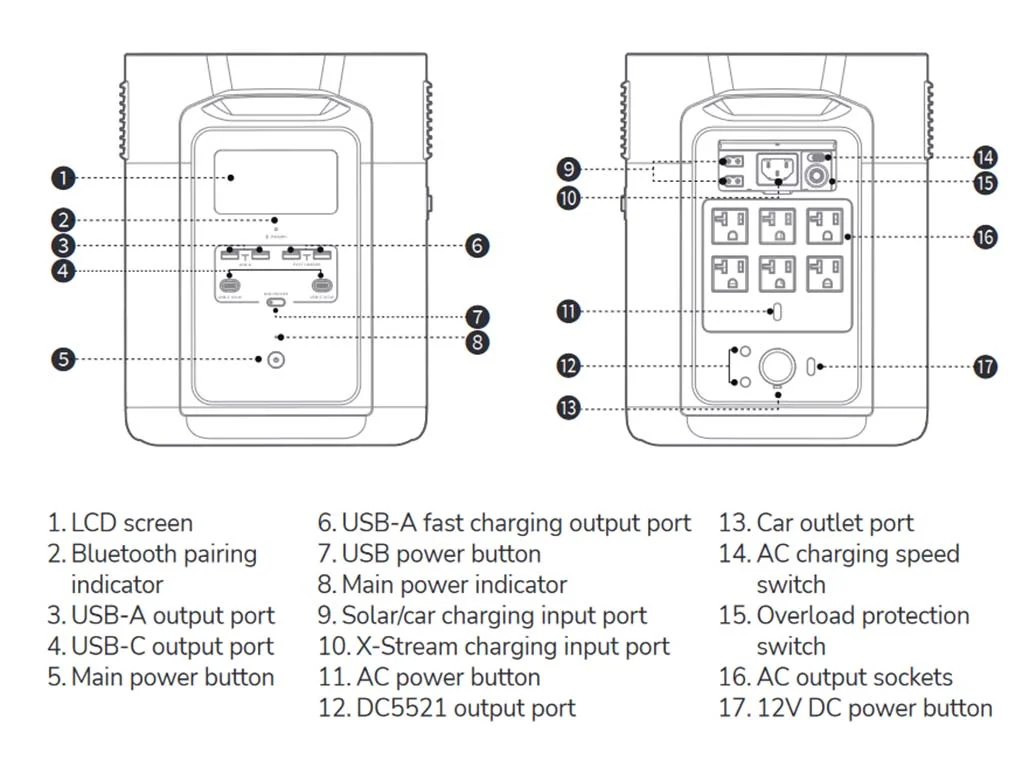
Here’s how these inverters and outlets translate into real-world usage:
- Low-watt devices (under 100W): Phones, laptops, LED lights, WiFi routers – both stations handle these easily, even multiple at a time.
- Medium-watt devices (200W to 700W): Desktop computers, refrigerators, TVs – plug a couple into either station and you’re good to go.
- High-watt devices (1,000W to 2,000W): Microwaves, coffee makers, electric kettles – both stations can power these, but running multiple at once will test their limits.
These are very capable devices that excel for camping and limited home or RV power supplies. If you know you can use your fridge, TV, and all your small devices – but you’ll have to use care with more powerful devices – you’ll be in good shape. For heavy-duty items like an air conditioner or electric dryer (3,000W or more), neither power station’s inverter can handle the load. You’ll want to check out the EcoFlow Delta Pro 3 vs. Anker F3800 comparison instead.
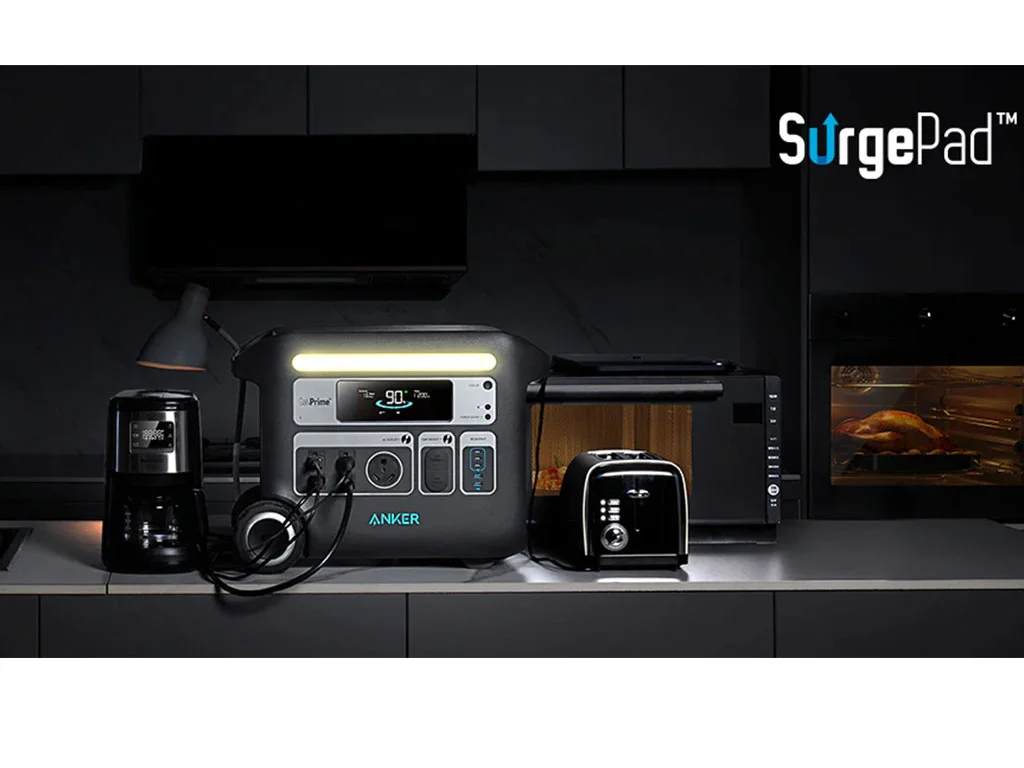
Both the EcoFlow Delta 2 Max and the Anker Solix F2000 have Uninterruptible Power Supply (UPS) functions. Keep your critical devices connected to the power station, which is plugged into the wall outlet. In an outage, they’ll quickly flip to battery power to keep your devices running. However, the Anker Solix F2000 has a faster transfer time (20ms) compared to the EcoFlow Delta 2 Max (30ms). This means the Anker is slightly better for keeping sensitive devices like computers running smoothly.
Output Verdict: When it comes to output options, the Anker Solix F2000 wins thanks to its high-amp output and extra USB-C ports. It’s the right choice if you want to power an RV or high-amp device. However, the EcoFlow Delta 2 Max still has the same power from its inverter, along with more standard outlets, more total USB ports, and more variety of other DC ports.
| Product | EcoFlow DELTA 2 Max | Anker Solix F2000 / PowerHouse 767 |
|---|---|---|
| AC Output | 2,400W | 2,400W |
| 120V Outlets | 6 | 4x20A, 1x30A |
| 240V Outlets | – | – |
| UPS / EPS | 30ms (EPS) | 20ms |
| USB-A Ports | 4x12W/18W | 2x12W |
| USB-C Ports | 2x100W | 3x100W |
| DC 5521 (Barrel Plug) | 2x38W 3A | – |
| Cigarette Lighter | 1x126W | 2x120W |
| Connectivity | WiFi / Bluetooth | WiFi / Bluetooth |
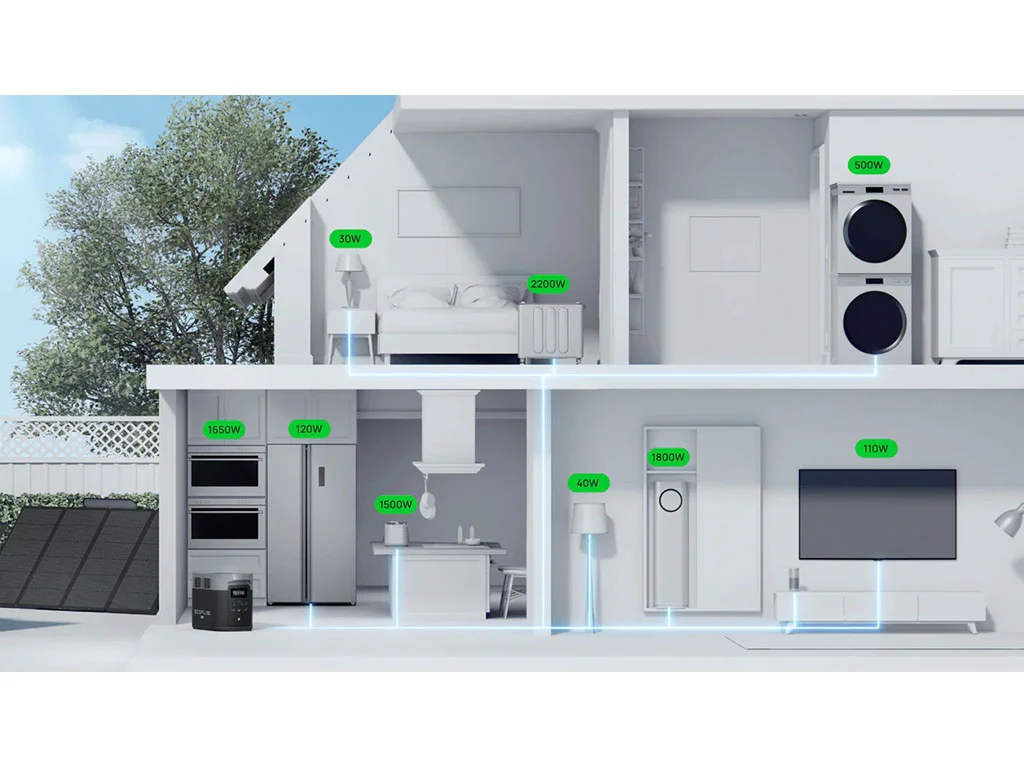
Battery Life: Power That Lasts
Battery capacity, measured in watt-hours (Wh), tells you how long your power station can keep your devices running before it needs a recharge. The EcoFlow Delta 2 Max and Anker Solix F2000 both offer 2,048Wh of capacity, which gives you plenty of power to work with.
That’s enough juice to keep a 60W laptop or portable fridge running for about 27 hours. Or a standard refrigerator (200W continuous use) for about 8 hours. If you use a total of 500W continuously (TV, fridge, and a handful of small devices), you can expect about 3 hours.
Here’s a quick breakdown of how long these power stations can keep some common devices powered:
- Low-power devices (60W): Laptops, routers – approximately 27 hours
- Medium-power devices (500W): Mini-fridge, TV – around 3.3 hours
- High-power devices (1,000W): Microwaves, space heaters – roughly 1.6 hours
Both stations also allow for extra battery units, but the Delta 2 Max pulls ahead here. It can use two extra batteries, reaching up to 6,144Wh. The Anker Solix F2000 doubles up to 4,096Wh. It’s still a strong contender but offers less total expansion.
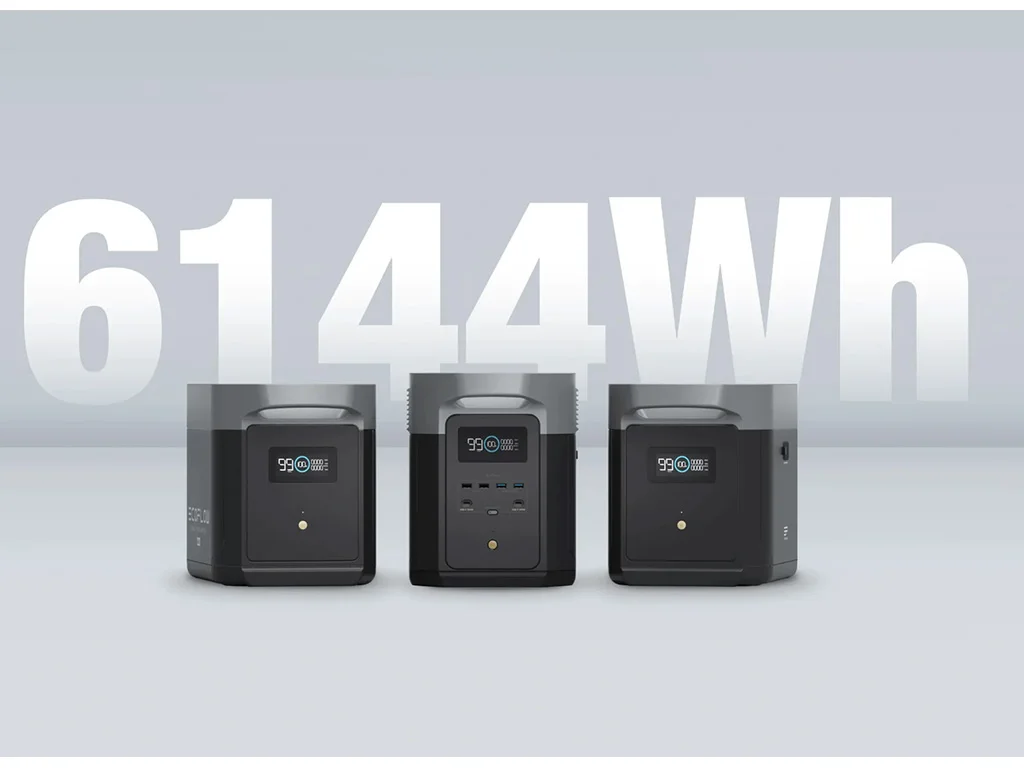
Both the EcoFlow and Anker use LiFePO4 (LFP) batteries, known for their durability. They’re rated for over 3,000 charge/discharge cycles, which translates to about 8 years of daily use before the battery capacity starts to degrade noticeably. That’s a solid investment in long-term energy independence, especially when backed by 5-year warranties on both units.
Battery Verdict: The EcoFlow Delta 2 Max takes the lead with its superior battery expandability and compact, long-lasting power. While both units offer durable, reliable battery performance, the extra capacity option with the Delta 2 Max makes it a smarter choice for users looking for longer power use. The Anker Solix F2000 is a strong runner-up, especially for those who don’t need the extra expansion.
| Product | EcoFlow DELTA 2 Max | Anker Solix F2000 / PowerHouse 767 |
|---|---|---|
| Battery | 2,048Wh | 2,048Wh |
| Battery (System Max) | 6,144Wh | 4,096Wh |
| Warranty | 5 years | 5 years |
| Battery Type | LiFePO4 / LFP | LiFePO4 / LFP |
| Battery Cycles | >3,000 | >3,000 |
| Buy Now | Buy D2M | Buy Now |
| Buy on Amazon | D2M on Amazon | Buy on Amazon |
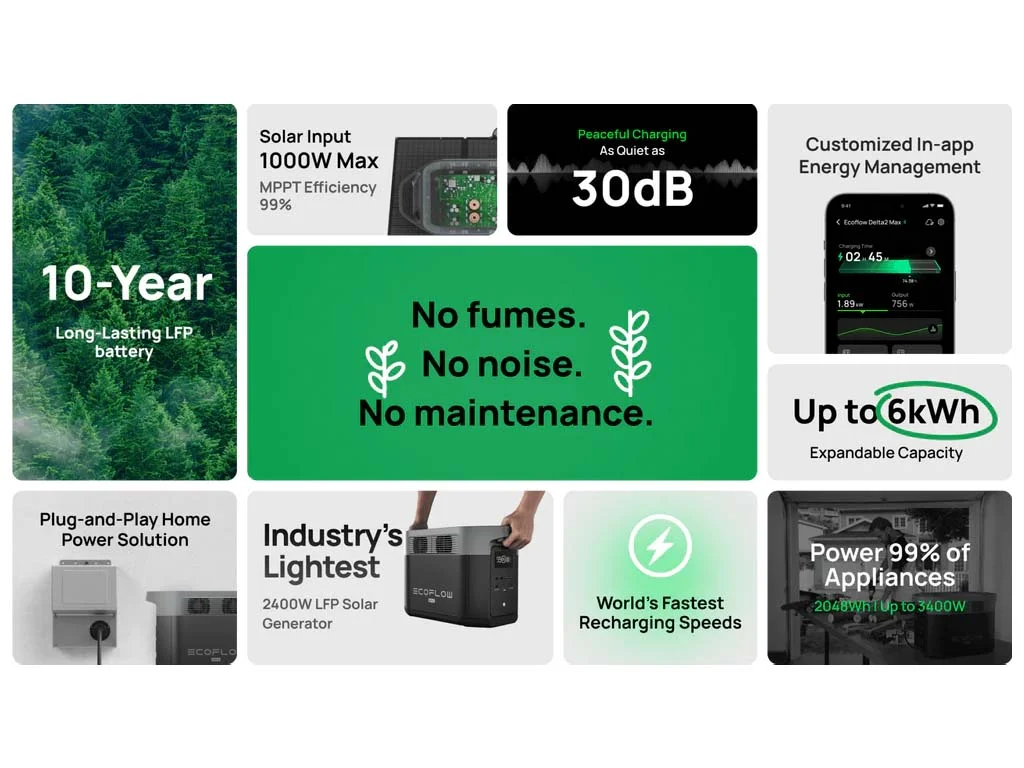
Charging Speeds: Power Up Fast
When you’re relying on a power station, how quickly it can recharge between uses is a big deal. Whether you’re heading out on an adventure or preparing for the next power outage, faster charging means less downtime.
Both the EcoFlow Delta 2 Max and the Anker Solix F2000 offer multiple ways to recharge, but their speeds and inputs vary.
- AC Wall Charging: Both power stations can be plugged into a standard wall outlet for fast recharges, but the Delta 2 Max is a bit faster, recharging in about 1.4 hours thanks to its 1,800W input. The Anker F2000 takes a little longer, clocking in at 1.7 hours with a 1,440W input.
- Solar Charging: If you’re off-grid, solar power is key. The Delta 2 Max shines here with dual solar inputs, each rated for 500W, allowing for up to 1,000W of solar input. It can recharge in about 2.5 hours in optimal sunlight. The Anker Solix F2000 can also handle 1,000W of solar input, but with just one input, it’s a bit less flexible, though it still recharges in about 2.5 hours. However, actually maxing out this power station’s single input can be more challenging.
- Car Charging: While both units offer car charging options from a standard 120W cigarette lighter outlet, the batteries are a bit too large for this to be practical, taking about 20 hours to refill. Instead, you’ll want to use a more advanced car charger, like the EcoFlow 800W Alternator Charger (exclusive to EcoFlow models) or a Bluetti 560W Alternator Charger 1 (universal design).
- Fuel Generators: Using a fuel generator with a solar generator can be a great way to create confidence in any situation. The fuel generator rapidly fills up the power station battery, allowing you to use the full generator output to quickly recharge then enjoy hours or days of silent battery power. Once again, the EcoFlow Dual Fuel Generator is a more advanced option that uses DC charging and electric remote start/stop, but only works with EcoFlow models. Any inverter generator can work through either, but it goes through the AC systems.
Charging Verdict: The EcoFlow Delta 2 Max takes the win for charging flexibility and speed, with faster AC charging, dual solar inputs, and superior EcoFlow charging accessories. The Anker Solix F2000 recharges perfectly fast but has slightly slower AC charging, one solar input, and can only use universal charging add-ons.
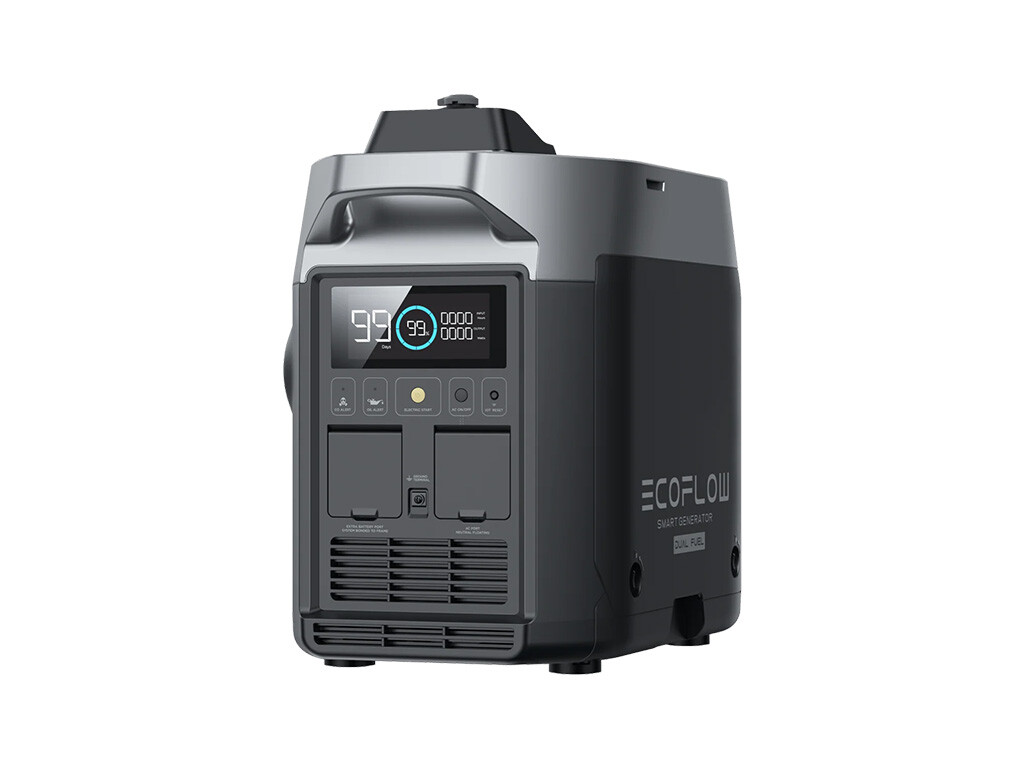
|
EcoFlow Dual Fuel Smart Generator |
DFSG on EcoFlow Buy on Amazon |
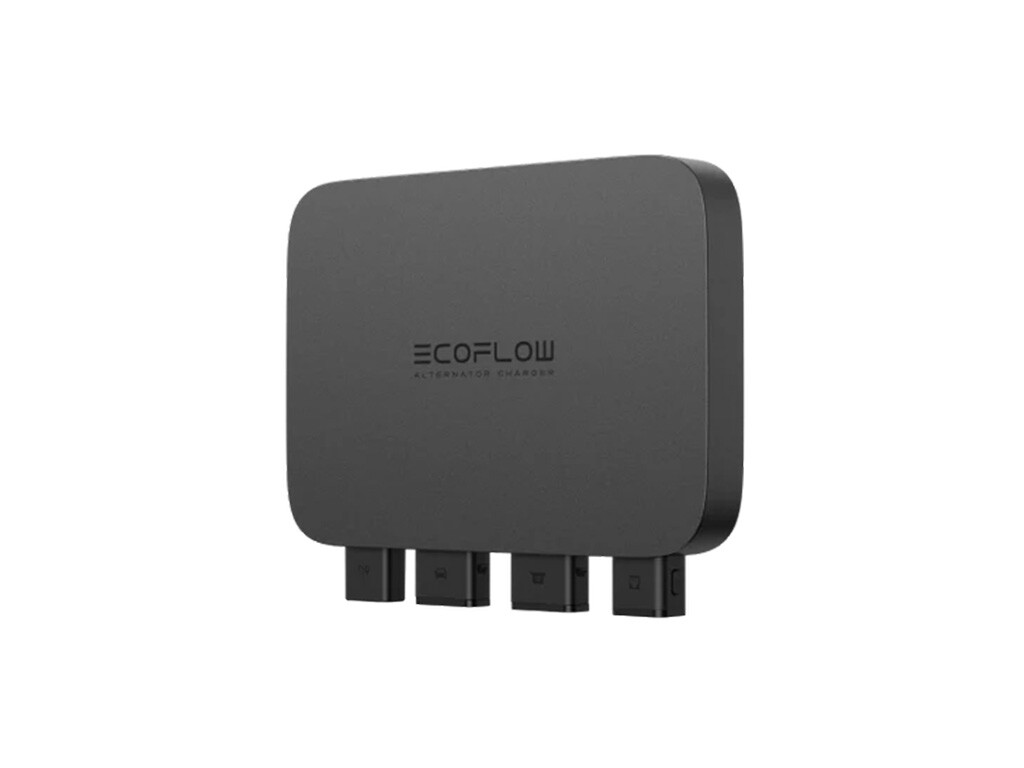
|
EcoFlow 800W Alternator Charger |
EFAC on EcoFlow EFAC on Amazon |
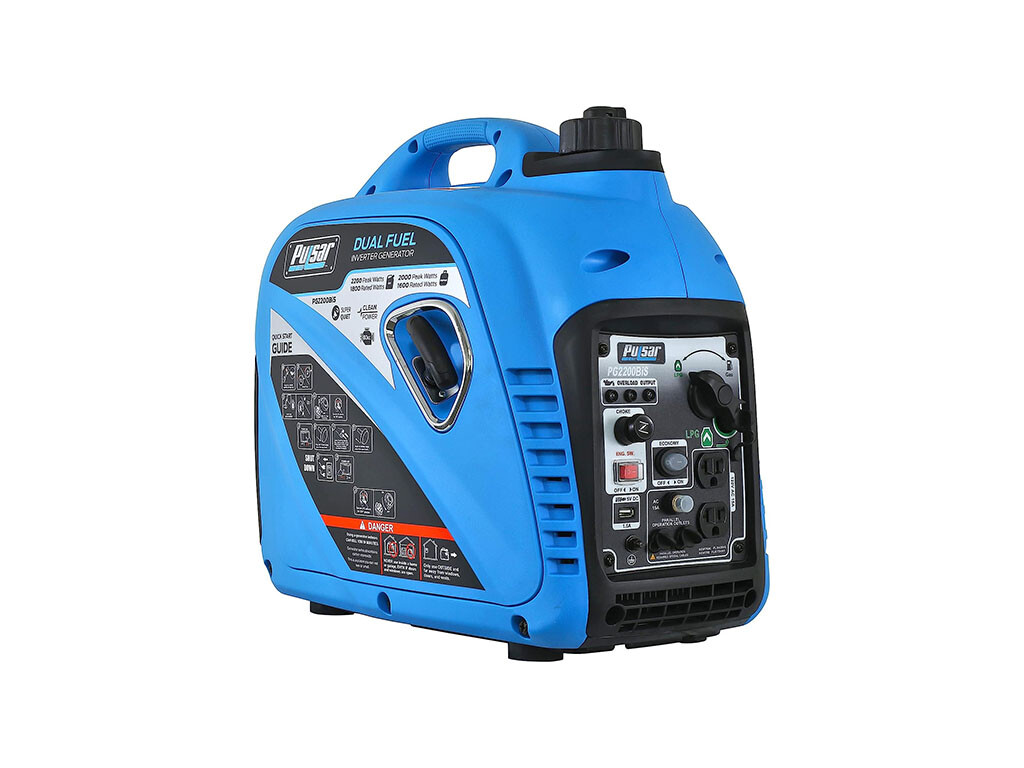
|
Pulsar 2,200W Portable Dual Fuel Generator |
Buy on Amazon |
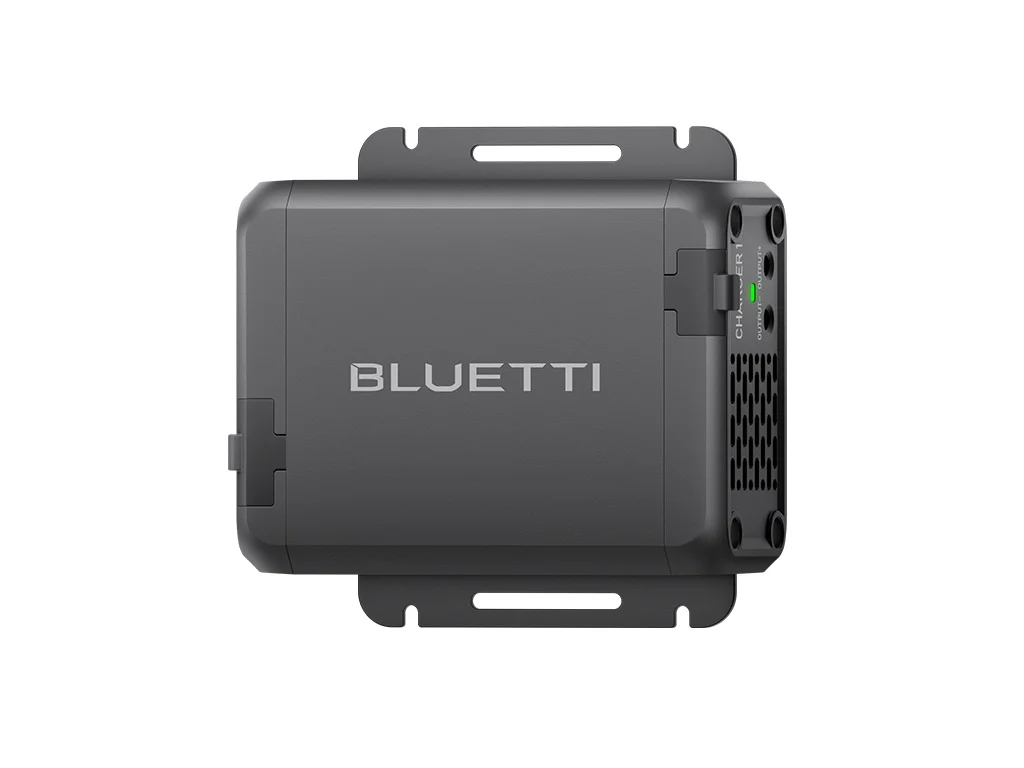
|
BLUETTI 560W Alternator Charger 1 |
Charger on Bluetti |
| Product | EcoFlow DELTA 2 Max | Anker Solix F2000 / PowerHouse 767 |
|---|---|---|
| AC Input | 1,800W | 1,440W |
| AC Recharge Hours (Est.) | 1.4h | 1.7h |
| Solar Input | 1,000W | 1,000W |
| Solar Recharge Hours (Est.) | 2.5h | 2.5h |
| Solar Input 1 Watts | 500W | 1000W |
| Solar Input 1 Volts Min | 11V | 11V |
| Solar Input 1 Volts Max | 60V | 60V |
| Solar Input 1 Amps | 15A | 20A |
| Solar Input 2 Watts | 500W | – |
| Solar Input 2 Volts Min | 11V | – |
| Solar Input 2 Volts Max | 60V | – |
| Solar Input 2 Amps | 15A | – |
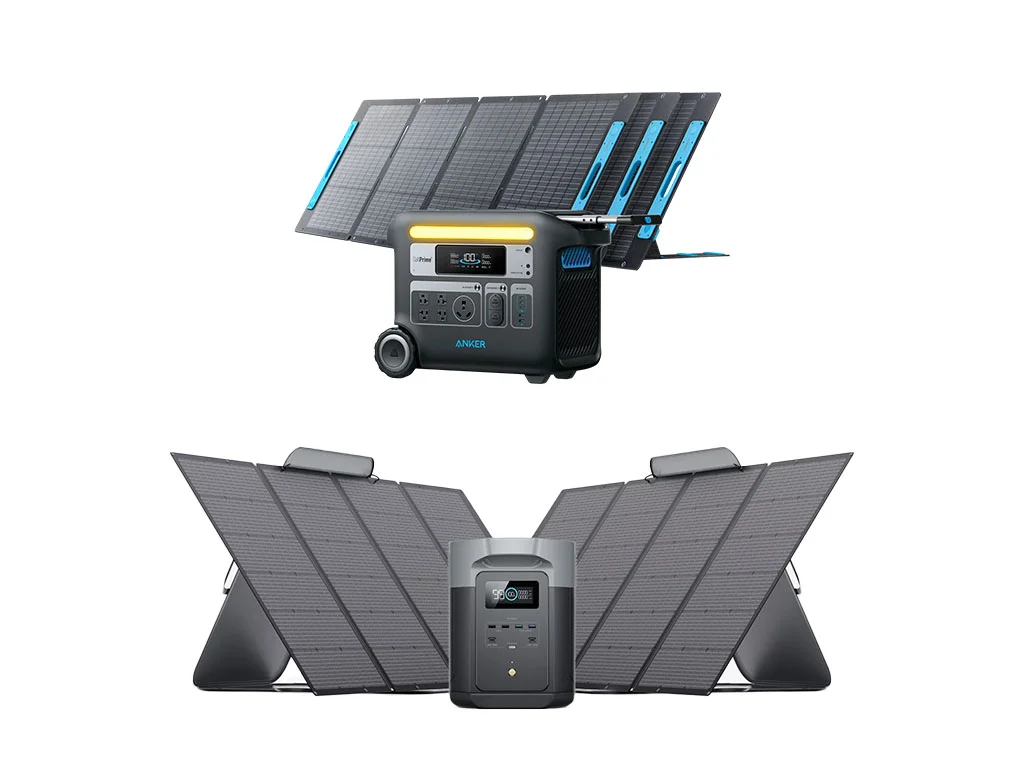
Size and Portability: How Heavy Are They?
When it comes to portable power stations, weight and dimensions can make or break how useful they are on the go. One of the key advantages of these all-in-one systems over DIY battery setups is that you can take them with you, whether it’s for an RV trip, camping, or an off-grid adventure. But how portable are they really?
The EcoFlow Delta 2 Max is lighter at 50 lbs (23 kg) and more compact, making it easier to move around or store in tight spaces like a camper or car trunk.
On the other hand, the Anker Solix F2000 is noticeably heavier, weighing in at 67 lbs 31 kg). Its advantage comes with the telescopic handle and integrated wheels.
Portability Verdict: The EcoFlow Delta 2 Max has the lighter and more compact setup, making it easier for camping and on-the-go power. The Anker Solix F2000 has a handle and wheels that make it easy to take over smooth surfaces, but the heavier weight is tougher to carry or lift.
| Product | EcoFlow DELTA 2 Max | Anker Solix F2000 / PowerHouse 767 |
|---|---|---|
| Weight (lbs) | 50lbs | 67.2lbs |
| Weight (kg) | 23kg | 30.5kg |
| Dimensions (in) | 19.6×9.5x12in | 20.7×15.5×9.8in |
| Dimensions (mm) | 497x242x305mm | 525x395x250mm |
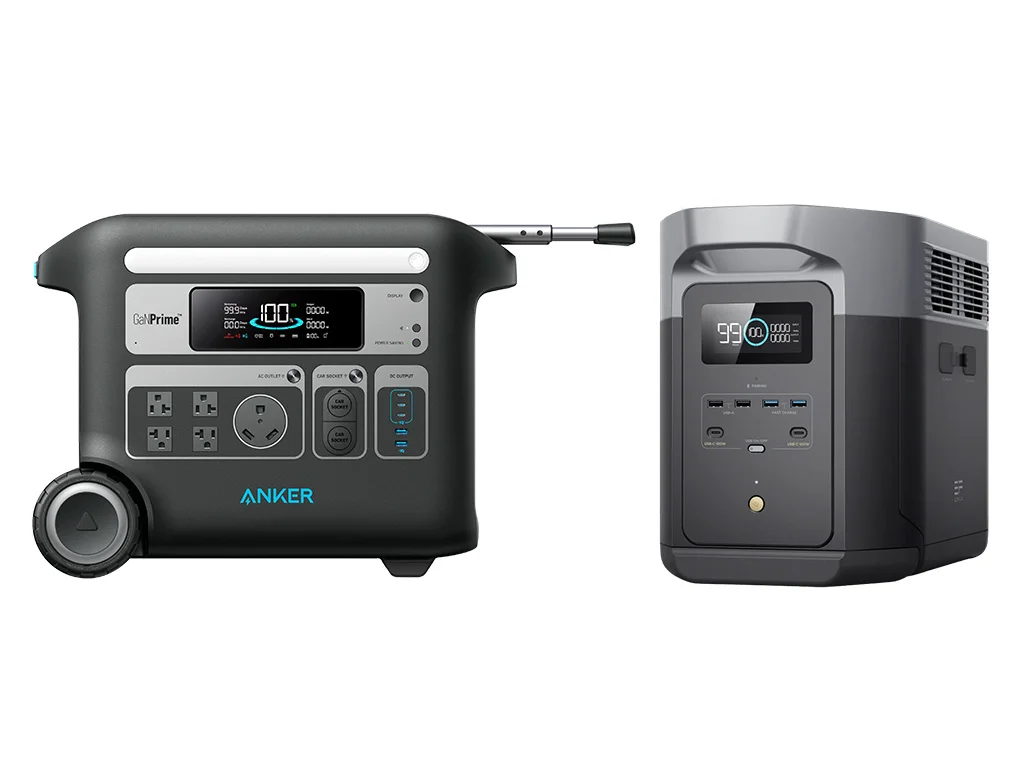
Final Verdict: Our Recommendation
After a deep dive into the EcoFlow Delta 2 Max vs. Anker Solix F2000, it’s clear that both power stations have their strengths, but one emerges as the better all-around option depending on your needs.
We prefer the EcoFlow Delta 2 Max due to the higher battery capacity, more compact design, and better solar inputs. The EcoFlow charging accessories are more reasons to favor this unit. Yet the Anker comes with a high-amp output and a faster UPS transfer time, while keeping the same battery capacity and inverter ratings.
| EcoFlow Delta 2 Max | Anker Solix F2000 |
|---|---|
Let’s recap the key takeaways:
- Inverter and Outputs: The Anker Solix F2000 stands out with its high-amp outlets and more USB-C ports. However, the Delta 2 Max offers flexible output options that will cover most common power needs with ease.
- Battery Capacity: The Delta 2 Max takes the lead here with greater battery expansion capability, allowing you to reach up to 6,144Wh, making it perfect for extended off-grid use. The Anker, while solid, maxes out at 4,096Wh.
- Charging Speeds: The Delta 2 Max is faster, particularly with AC wall charging and its dual solar inputs, making it more versatile for those needing quicker recharges. It can also use the EcoFlow-specific car charger and smart fuel generator while Anker can only use universal options.
- Portability: The Delta 2 Max is significantly lighter and more compact, making it easier to carry for camping or road trips. The Solix F2000 has a handle and wheels to drag anywhere, but is harder to lift due to heavier weight.
- Value: The value of both is very similar, usually around $0.85 or so with discounts and sales. These are both very competitive in the overall market and the better value will likely come down to the current pricing at the time of your purchase. If you get more than 3kWh battery, don’t forget to factor in 30% tax credit.
Our Recommendation: We choose the EcoFlow Delta 2 Max as the superior choice due to its lighter design, faster charging speeds, and greater battery expansion. However, the Anker Solix F2000 is the better pick for users who need a high-amp output or faster UPS transfer time. They are overall very similar – and capable – portable power stations.
Get 5% off most EcoFlow orders with SOLARWAY5OFF discount code.

|
EcoFlow DELTA 2 Max |
D2M on EcoFlow D2M on Amazon |

|
Anker SOLIX F2000 |
Buy on Anker Buy on Amazon |
Specs Comparison Chart: EcoFlow Delta 2 Max vs. Anker Solix F2000
To get a clear view of how the EcoFlow Delta 2 Max and Anker Solix F2000 stack up, check out the detailed comparison chart below. This chart breaks down the key specs side-by-side, and includes a link to each user manual to answer any questions you may still have.
| Product | EcoFlow DELTA 2 Max | Anker Solix F2000 / PowerHouse 767 |
|---|---|---|
| Battery | 2,048Wh | 2,048Wh |
| Battery (System Max) | 6,144Wh | 4,096Wh |
| AC Output | 2,400W | 2,400W |
| AC Input | 1,800W | 1,440W |
| AC Recharge Hours (Est.) | 1.4h | 1.7h |
| Solar Input | 1,000W | 1,000W |
| Solar Recharge Hours (Est.) | 2.5h | 2.5h |
| Warranty | 5 years | 5 years |
| Weight (lbs) | 50lbs | 67.2lbs |
| Weight (kg) | 23kg | 30.5kg |
| Dimensions (in) | 19.6×9.5x12in | 20.7×15.5×9.8in |
| Dimensions (mm) | 497x242x305mm | 525x395x250mm |
| Solar Input 1 Watts | 500W | 1000W |
| Solar Input 1 Volts Min | 11V | 11V |
| Solar Input 1 Volts Max | 60V | 60V |
| Solar Input 1 Amps | 15A | 20A |
| Solar Input 2 Watts | 500W | – |
| Solar Input 2 Volts Min | 11V | – |
| Solar Input 2 Volts Max | 60V | – |
| Solar Input 2 Amps | 15A | – |
| Battery Type | LiFePO4 / LFP | LiFePO4 / LFP |
| Battery Cycles | >3,000 | >3,000 |
| 120V Outlets | 6 | 4x20A, 1x30A |
| UPS / EPS | 30ms (EPS) | 20ms |
| USB-A Ports | 4x12W/18W | 2x12W |
| USB-C Ports | 2x100W | 3x100W |
| DC 5521 (Barrel Plug) | 2x38W 3A | – |
| Cigarette Lighter | 1x126W | 2x120W |
| Connectivity | WiFi / Bluetooth | WiFi / Bluetooth |
| User Manual | User Manual | User Manual |
| Buy Now | Buy D2M | Buy Now |
| Buy on Amazon | D2M on Amazon | Buy on Amazon |
Get 5% off most EcoFlow orders with SOLARWAY5OFF discount code.

|
EcoFlow DELTA 2 Max |
D2M on EcoFlow D2M on Amazon |

|
Anker SOLIX F2000 |
Buy on Anker Buy on Amazon |
Final Wrap Up
The EcoFlow Delta 2 Max excels with faster charging, lighter weight, and greater battery expansion, making it perfect for long off-grid adventures or as a reliable home backup. Meanwhile, the Anker F2000 shines with its high-amp output and faster UPS transfer time, which is ideal for powering more demanding appliances like RV equipment or keeping your sensitive electronics running without interruption.
If you’re looking for more detailed breakdowns, check out our EcoFlow Delta 2 Max review and Anker Solix F2000 review, as well as other helpful comparison articles:
- EcoFlow Delta 2 Max vs. Bluetti AC200L
- EcoFlow Delta 2 Max vs. Jackery 2000 v2
- Anker Comparison Chart
- EcoFlow Comparison Chart
Whichever station you choose, you’ll gain the power you need to keep going, whether at home or on the road. Secure your reliable energy source today.







